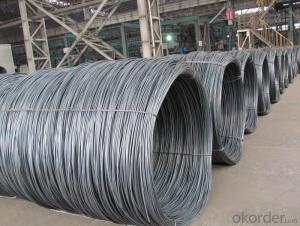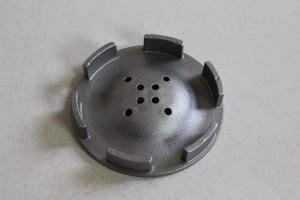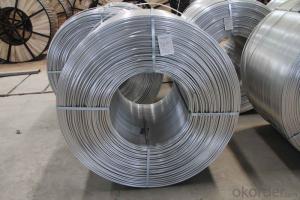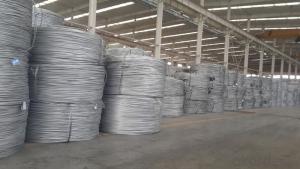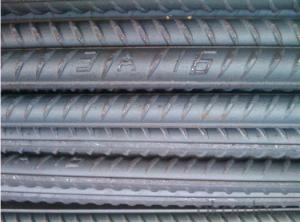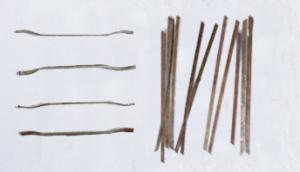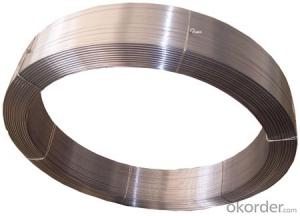Stainless Steel Closet Rod
Stainless Steel Closet Rod Related Searches
Best Paint For Stainless Steel Blanket Insulation For Steel Buildings Primer For Galvanized Steel Foam Filter For Stainless Steel H S Code For Stainless Steel Surface Grinding Wheels For Stainless Steel Surface Grinding Wheels For Hardened Steel Hole Saw For Stainless Steel Paint For Stainless Steel Stainless Steel For BbqHot Searches
Steel Mesh Panels For Sale Price For Stainless Steel Scrap Scrap Price For Stainless Steel Price For Stainless Steel Stainless Steel Tank For Sale Stainless Steel Sheets For Sale Cheap High Tea Sets For Sale Stainless Steel Tanks For Sale Stainless Steel For Sale High Density Fiberboard For Sale Solar Hot Water Collectors For Sale Scaffolding For Sale In Uae Scaffolding For Sale In Ireland Scaffolding For Sale In Houston Type Of Inverter For Solar Price Of Shipping Containers For Sale Types Of Inverter For Solar Stock Price For Aluminum Used Solar Inverter For Sale Steel Mesh Panels For SaleStainless Steel Closet Rod Supplier & Manufacturer from China
Okorder.com is a professional Stainless Steel Closet Rod supplier & manufacturer, offers integrated one-stop services including real-time quoting and online cargo tracking. We are funded by CNBM Group, a Fortune 500 enterprise and the largest Stainless Steel Closet Rod firm in China.Hot Products
FAQ
- Stainless steel wire springs are widely utilized in the jewelry sector due to their durability, strength, and resistance against corrosion. These springs come in different types, each serving a specific function. 1. Torsion Springs: Jewelry applications extensively employ torsion springs. These springs store mechanical energy when twisted and offer rotational or torsional force. They are commonly found in clasps, hooks, and closures, guaranteeing a secure and dependable connection. 2. Compression Springs: Jewelry incorporates compression springs that are designed to withstand compressive forces and revert to their original shape when the force is removed. They provide tension or pressure in adjustable bracelets or rings. These springs facilitate flexibility and adjustability, accommodating various wrist or finger sizes. 3. Extension Springs: Extension springs, also known as tension springs, are employed to absorb and store energy when stretched. They are frequently utilized in chain link connectors or necklace extenders, allowing for length adjustment. These springs deliver the necessary tension to keep the jewelry securely in place. 4. Wire Forms: Wire forms are versatile stainless steel wire springs that can be tailored into different shapes and sizes. They are commonly utilized in jewelry for decorative purposes, such as crafting unique pendant or earring designs. Wire forms encourage creativity and flexibility in jewelry design. It is essential to note that stainless steel wire springs utilized in the jewelry industry are generally crafted from high-quality stainless steel alloys. These alloys offer exceptional resistance to corrosion, ensuring that the springs maintain their integrity and appearance over time, even when exposed to moisture or chemicals.
- Yes, stainless steel wire can be used for heating elements. Stainless steel has excellent resistance to high temperatures, making it suitable for heating applications. Additionally, it has good corrosion resistance and electrical conductivity, which are important characteristics for efficient heating.
- Yes, stainless steel wire can be used for wire rope sleeves. Stainless steel is known for its excellent corrosion resistance and high strength, making it a suitable material for various applications, including wire rope sleeves. Stainless steel wire rope sleeves are commonly used to create a secure and strong connection between wire rope and other components. They provide protection and support to the wire rope, preventing wear and damage. Additionally, stainless steel wire rope sleeves offer durability and longevity, making them an ideal choice for various industries, such as marine, construction, and transportation.
- There exists a variety of stainless steel wire screens to cater to specific applications and objectives. Some commonly used types include: 1. Plain weave screens: These screens are woven by crossing wires over and under in a simple crisscross pattern. They are typically employed in general-purpose screening applications due to their strength and durability. 2. Twill weave screens: Similar to plain weave screens, twill weave screens have wires woven in a diagonal pattern, resulting in a tighter and more stable weave. They are often utilized in finer filtration and sieving applications. 3. Dutch weave screens: Dutch weave screens have a complex weave pattern with tightly woven wires in the warp direction and larger gaps in the weft direction. This structure provides excellent filtration performance, making them suitable for precision filtration and separation processes. 4. Welded wire screens: These screens are created by welding individual wires together at their intersections. They are renowned for their high strength and rigidity, making them ideal for heavy-duty applications such as security fencing or machine guards. 5. Expanded metal screens: Expanded metal screens are formed by cutting and stretching a metal sheet, resulting in diamond-shaped openings. They offer good airflow, visibility, and protection, commonly used in architectural and decorative applications. 6. Perforated metal screens: Perforated metal screens are produced by punching holes into a metal sheet, creating regularly spaced openings. They offer versatile functionality, allowing precise control over the size and distribution of the openings. They find application in acoustic panels, ventilation systems, sorting, or grading processes. When selecting the appropriate stainless steel wire screen, it is crucial to consider specific requirements like desired mesh size, strength, corrosion resistance, and compatibility with the surrounding environment.
- There are several common finishes available for stainless steel wire mesh, each providing different benefits and characteristics. Some of the most common finishes include: 1. Mill finish: This is the most basic finish for stainless steel wire mesh. It has a smooth and untreated surface, resulting in a natural silver color. Mill finish is suitable for applications where aesthetics are not a priority, but corrosion resistance is essential. 2. Electro-polished: This finish involves a specialized chemical process that removes a thin layer of the stainless steel surface. It results in a smooth, shiny, and corrosion-resistant finish. Electro-polished stainless steel wire mesh is commonly used in applications where hygiene and cleanability are critical, such as food processing or pharmaceutical industries. 3. PVC coated: PVC coating involves applying a layer of polyvinyl chloride (PVC) to the stainless steel wire mesh. This finish provides enhanced corrosion resistance and durability, as well as increased visibility due to the colored coating. PVC coated stainless steel wire mesh is often used in architectural applications, such as fencing or decorative panels. 4. Powder coated: Similar to PVC coating, powder coating involves applying a layer of polyester or epoxy powder to the stainless steel wire mesh. It provides a durable and corrosion-resistant finish, as well as a wide range of color options. Powder coated stainless steel wire mesh is commonly used in outdoor applications, such as landscaping or security fencing. 5. Hot-dipped galvanized: This finish involves immersing the stainless steel wire mesh in a bath of molten zinc. It creates a thick layer of zinc coating that provides excellent corrosion resistance, even in harsh environments. Hot-dipped galvanized stainless steel wire mesh is often used in marine applications or in areas exposed to high levels of humidity. It is important to consider the specific requirements of your application, such as corrosion resistance, hygiene, or aesthetics, when choosing the appropriate finish for stainless steel wire mesh. Additionally, consulting with a knowledgeable supplier or manufacturer can help ensure you select the most suitable finish for your specific needs.
- The difference between high gloss wire drawing and stainless steel drawing panel
- High light the drawing, I dare not to use the original evaluation, drawing is to increase the visual area, enhance the material texture effect, but also is of high light, this is not a little more effort, you can find some pictures on the details of a clear, ha ha, I hope to help you!
- Stainless steel wire exhibits remarkable resistance to wear and tear, which can be attributed to its exceptional strength and durability. Its corrosion resistance is further enhanced by the presence of alloying elements like chromium and nickel, rendering it impervious to rust, oxidation, and staining. Moreover, stainless steel wire possesses high resilience, enabling it to endure heavy loads, bending, and twisting without compromising its shape or strength. This innate resistance to wear and tear renders stainless steel wire suitable for diverse industries, including construction, automotive, aerospace, and marine. In these sectors, it finds extensive use in applications demanding cables, springs, mesh, and more.
- There is a wide range of stainless steel wire rope swivels available in the market. Here are some options to consider: 1. Single Ball Bearing Swivels: These swivels are designed with a single ball bearing, enabling smooth rotation and reduced friction. They are commonly used when expecting moderate to high loads. 2. Double Ball Bearing Swivels: For increased load capacity and improved rotation, double ball bearing swivels are the ideal choice. They provide exceptional strength and durability, making them suitable for heavy-duty applications. 3. Barrel Swivels: Designed in a cylindrical shape, barrel swivels are commonly used in fishing. Their purpose is to prevent twisting or tangling of fishing lines while allowing for smooth rotation. 4. Clevis Swivels: Clevis swivels are equipped with a clevis pin, enabling easy attachment and detachment of the swivel. They are widely used in lifting and rigging applications where quick and secure connections are crucial. 5. Eye & Eye Swivels: These swivels have loops on both ends, making it easy to attach them to other rigging components. They are commonly used in overhead lifting applications and can accommodate multiple connections. 6. Bolt Snap Swivels: Bolt snap swivels have a spring-loaded snap hook that ensures quick and secure attachment. They are often utilized in marine applications, such as connecting ropes or chains to anchors or buoys. When selecting a stainless steel wire rope swivel, it is vital to consider the specific requirements of your application. Factors such as load capacity, rotational movement, and attachment method should be carefully evaluated to ensure that the chosen swivel effectively meets your needs.

















